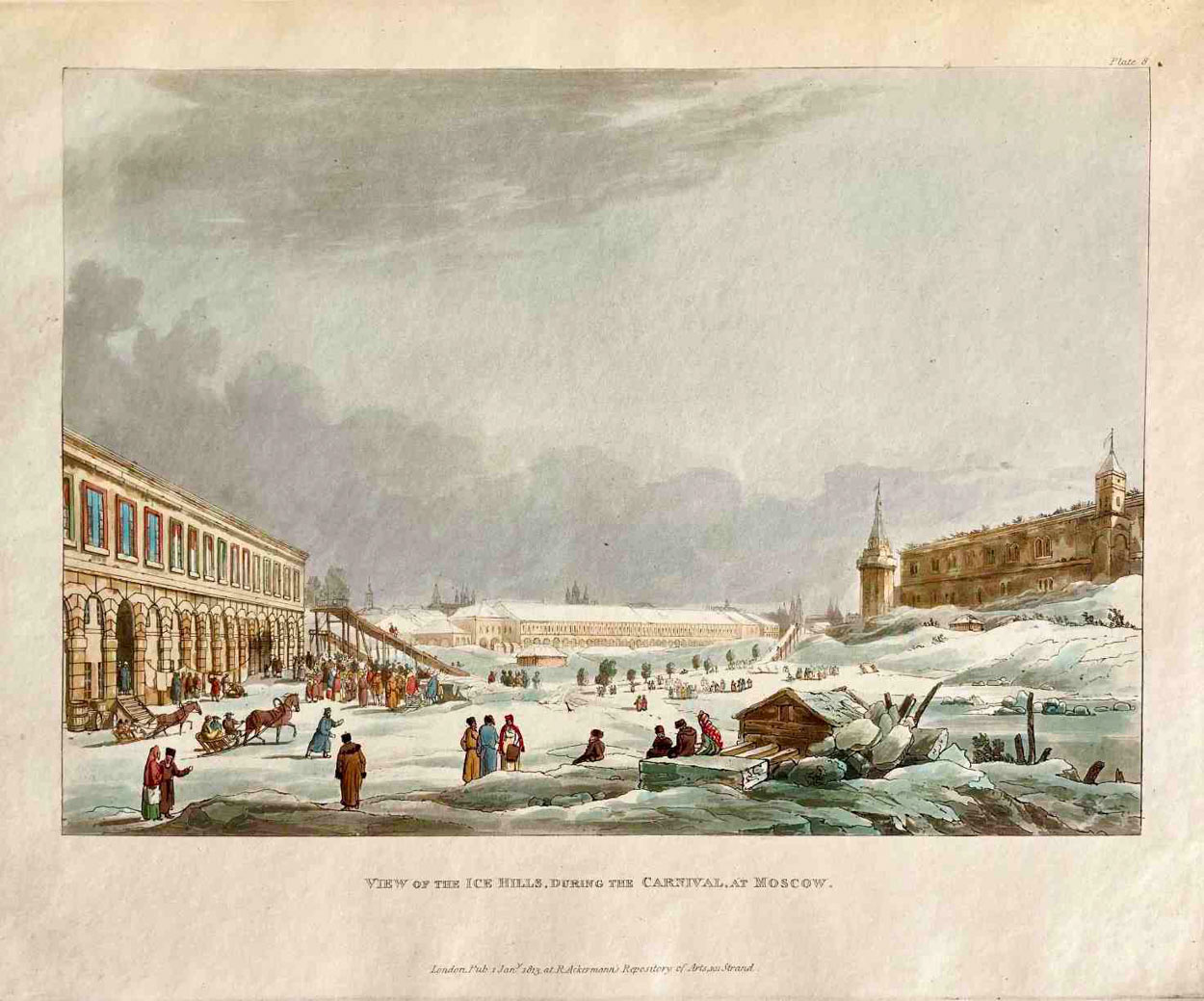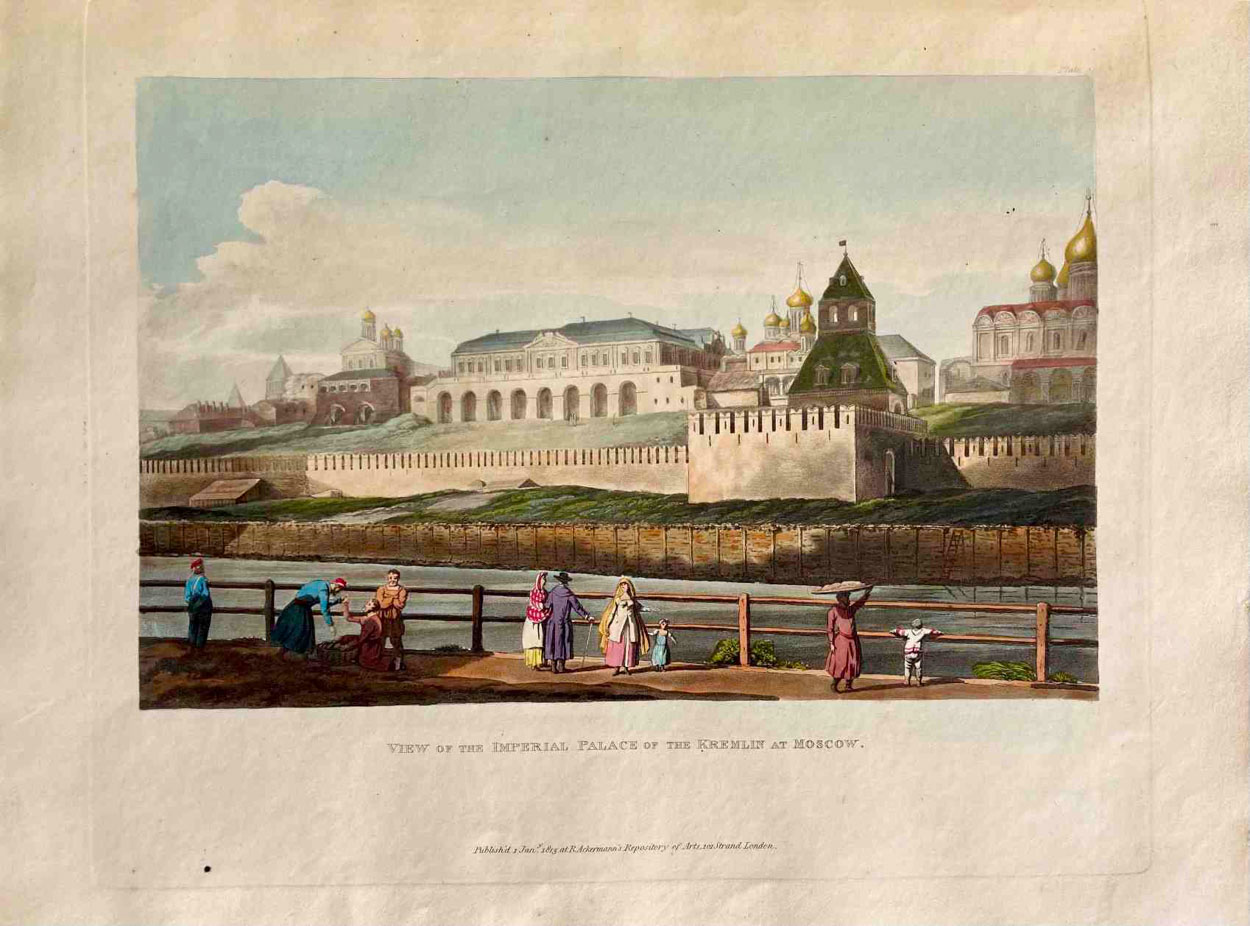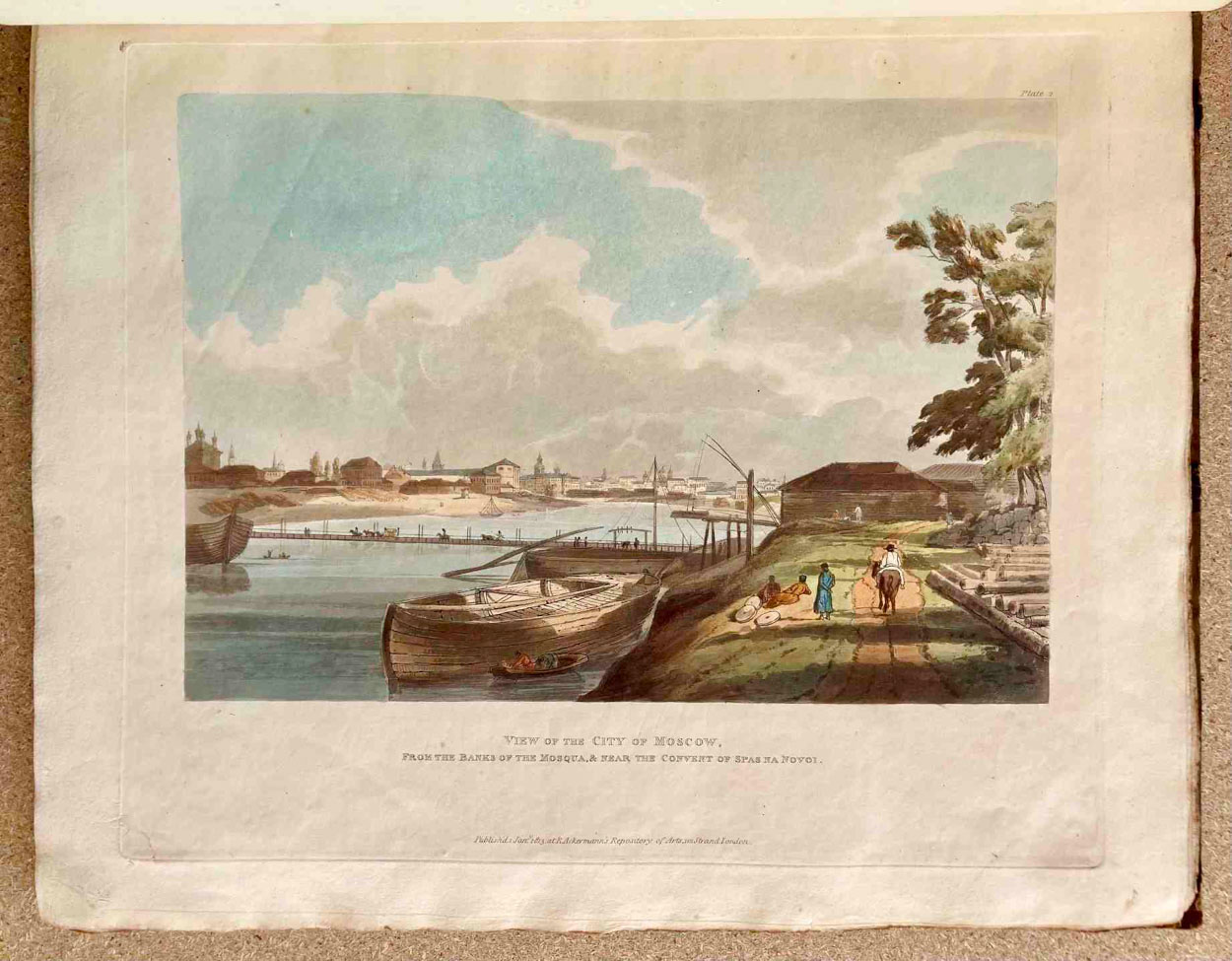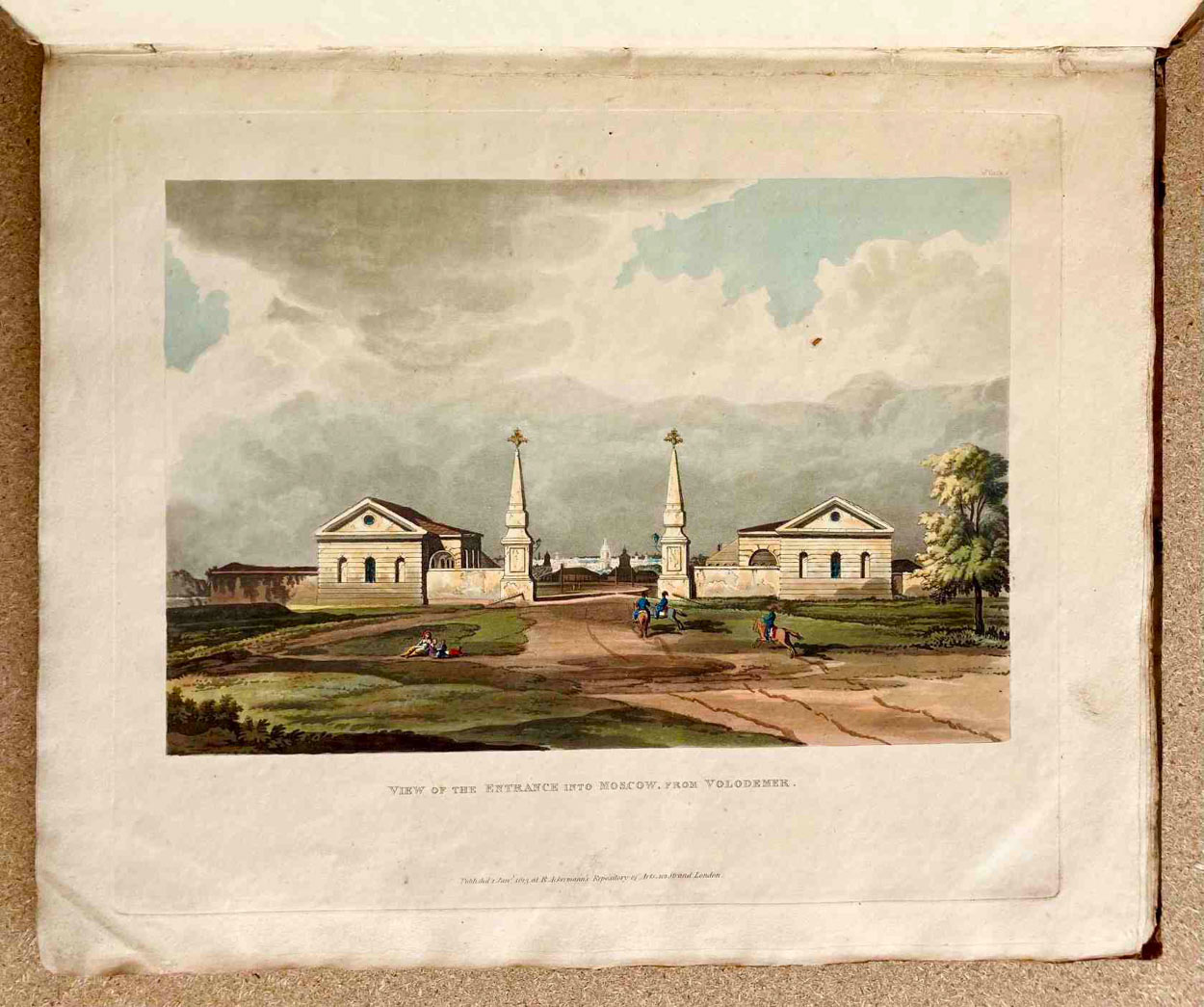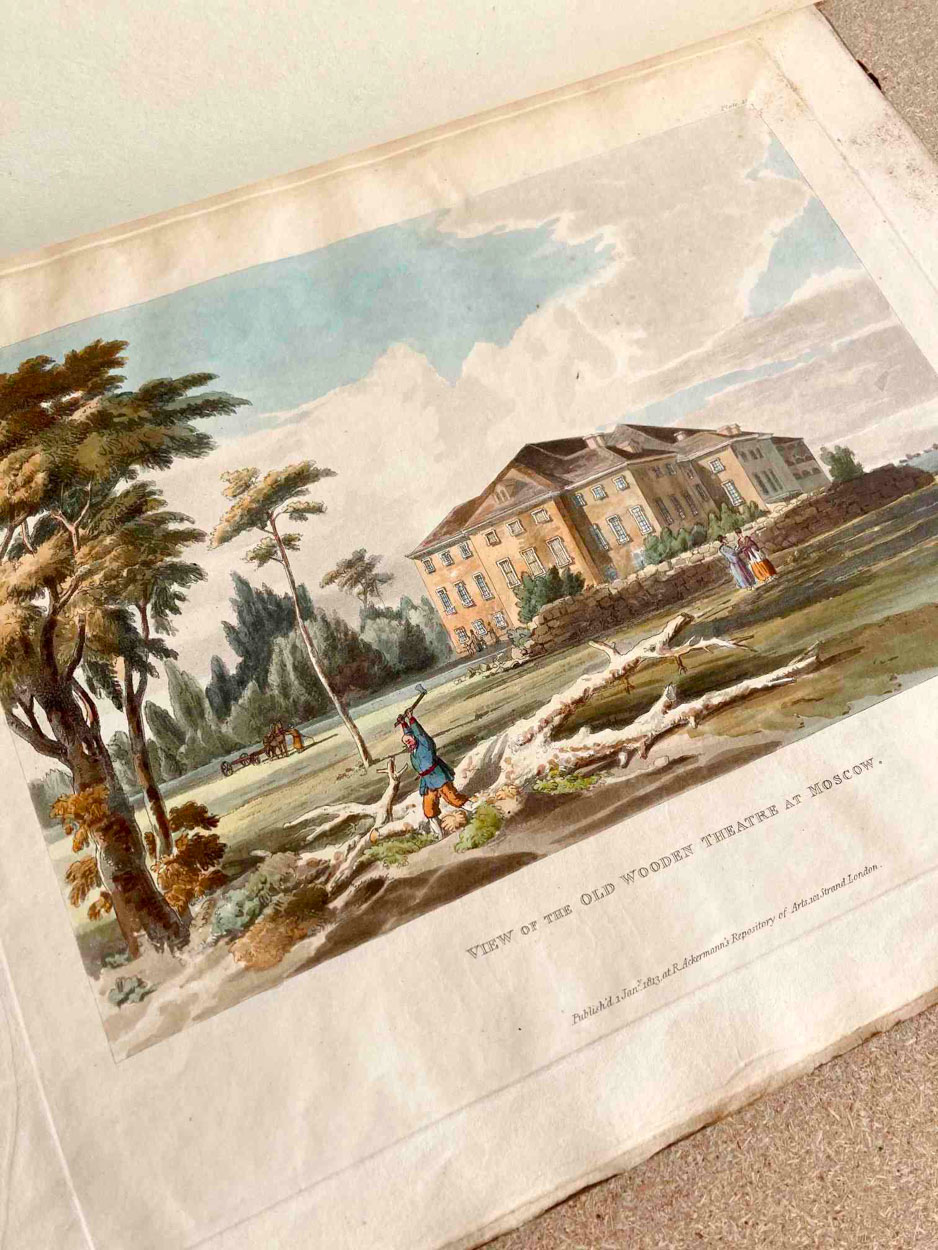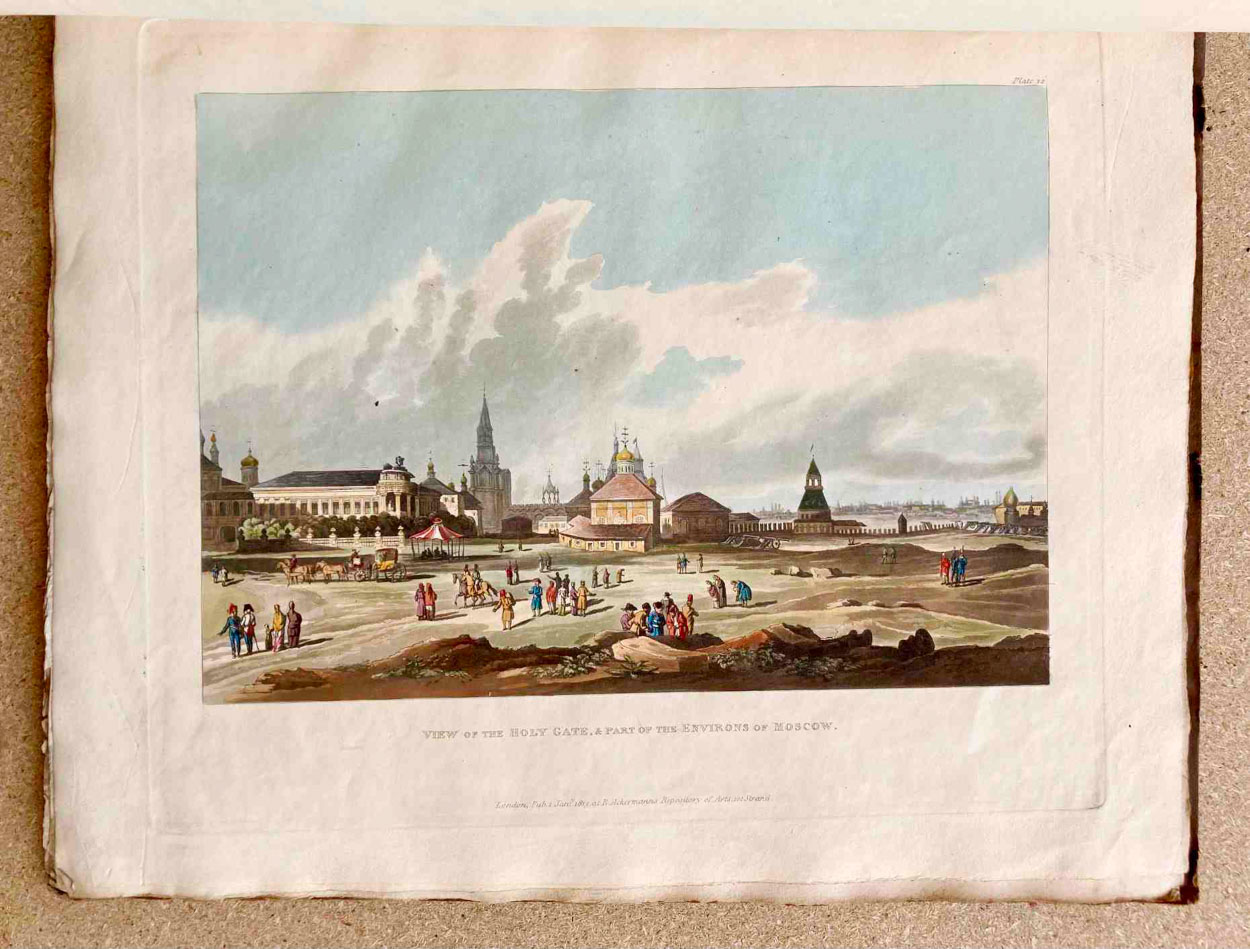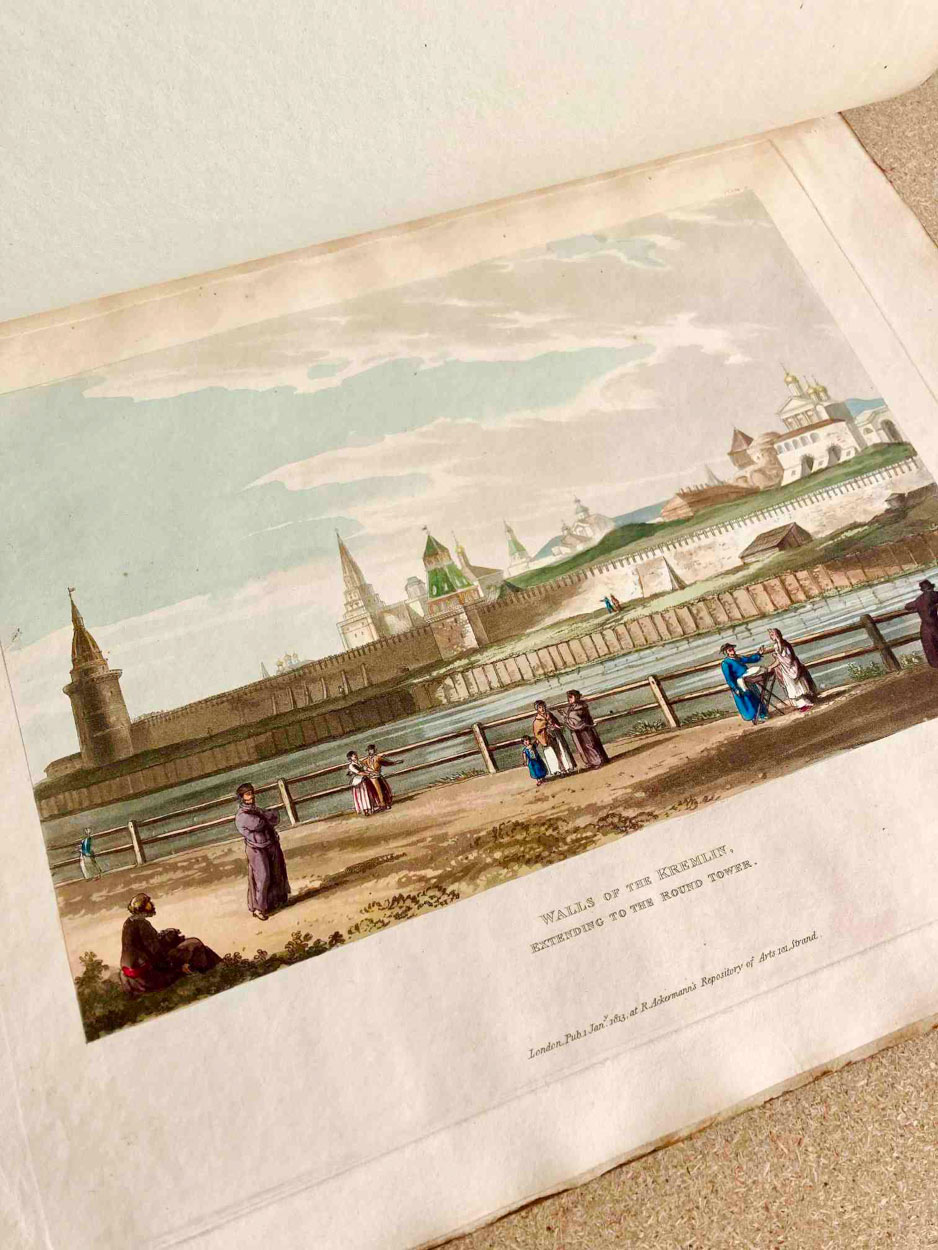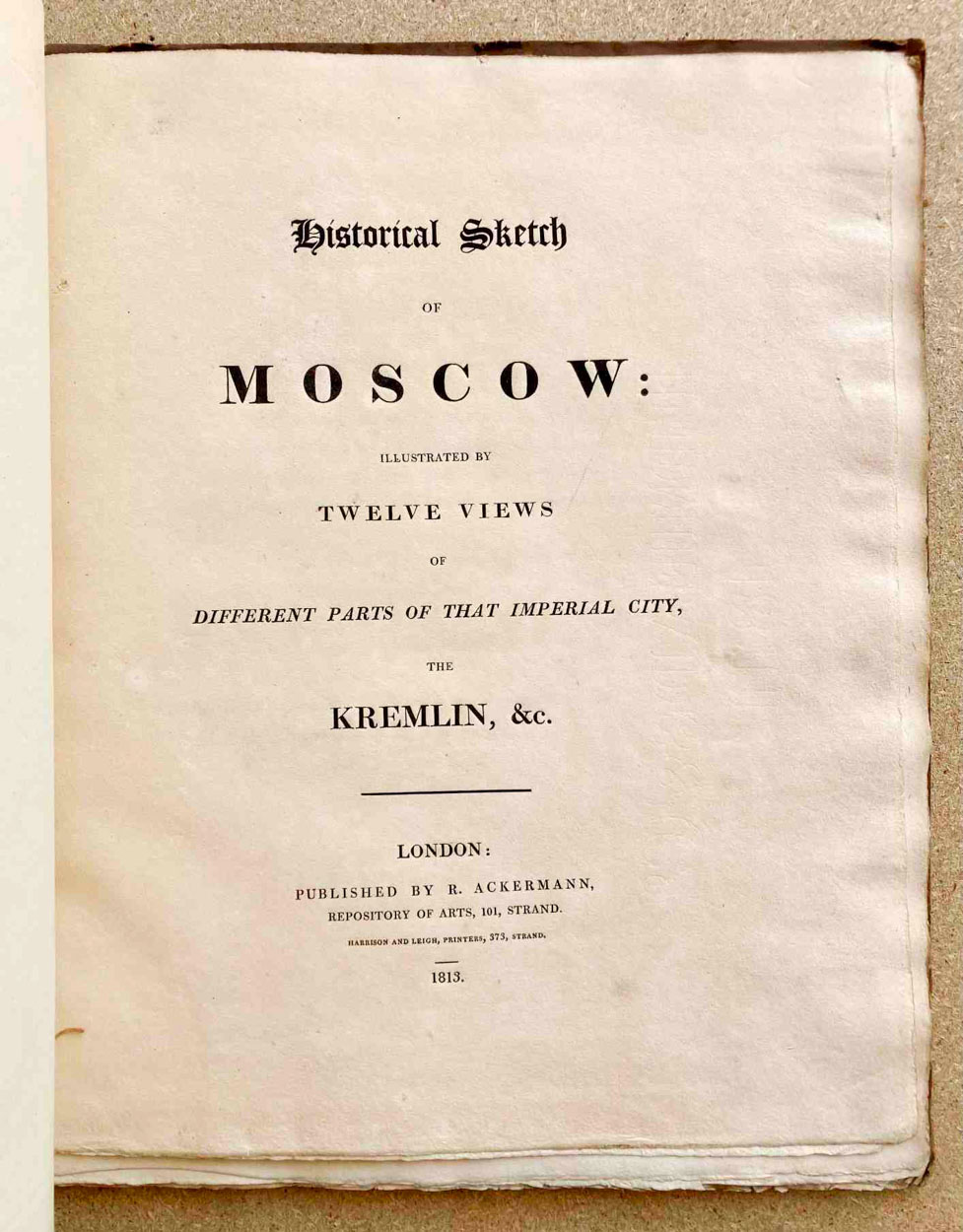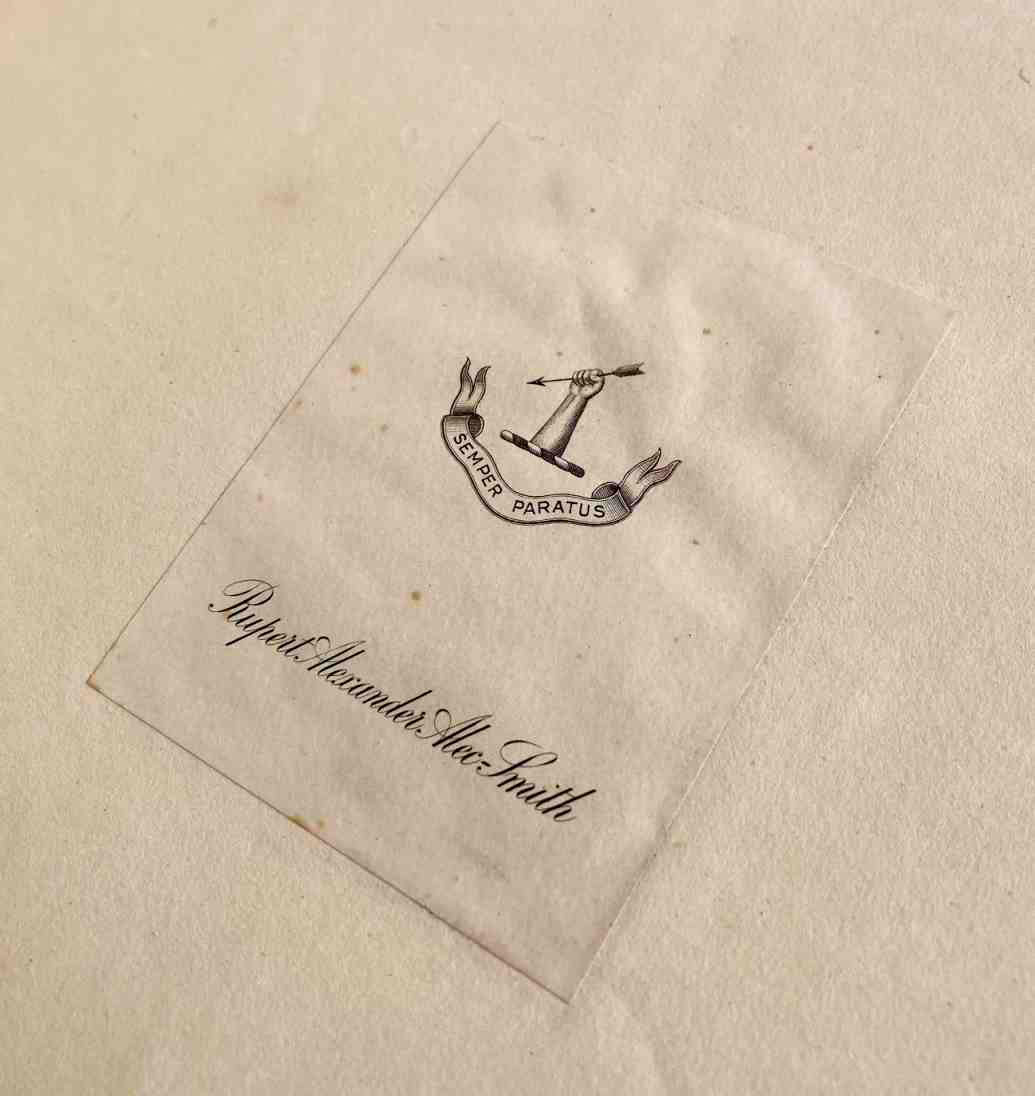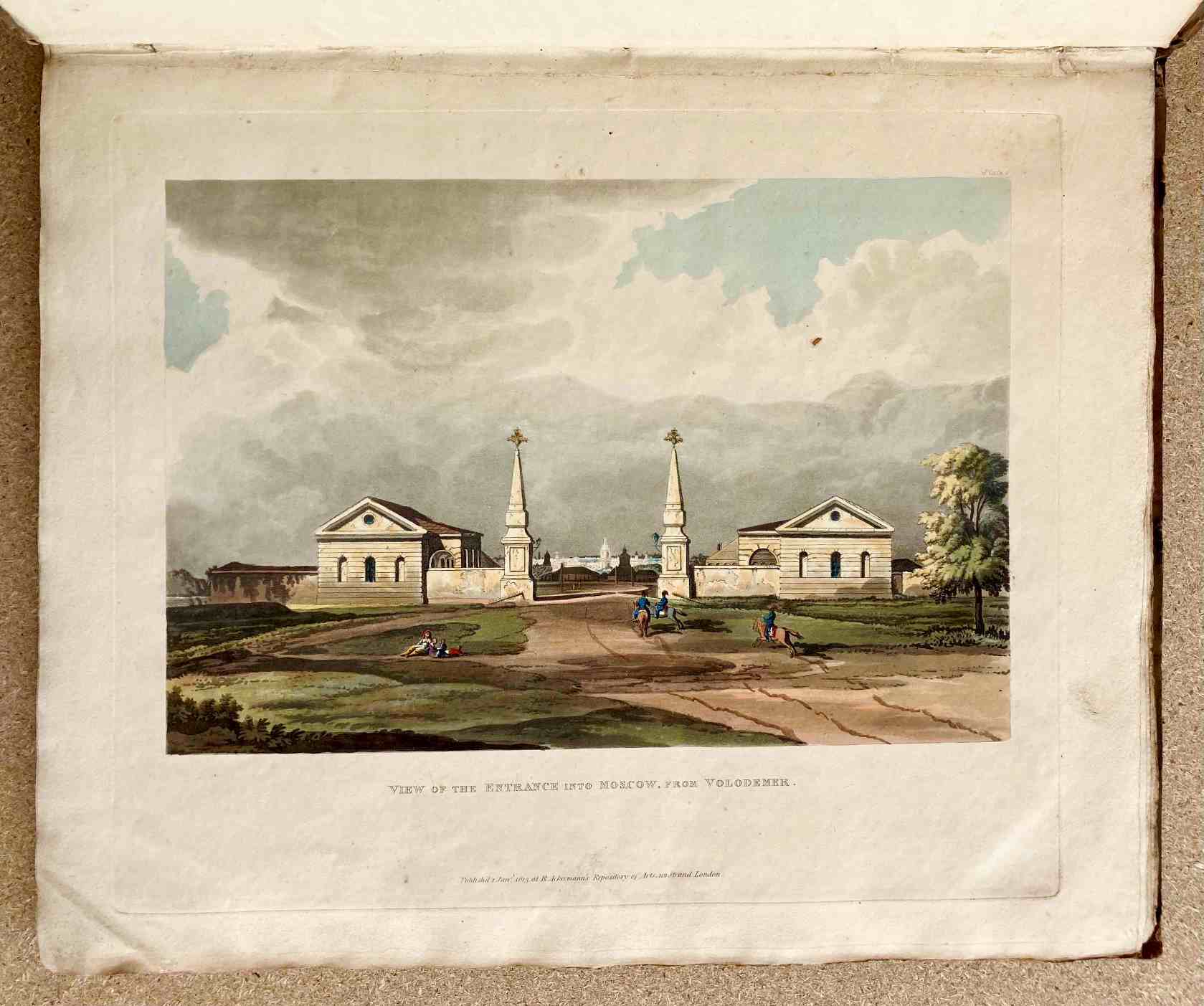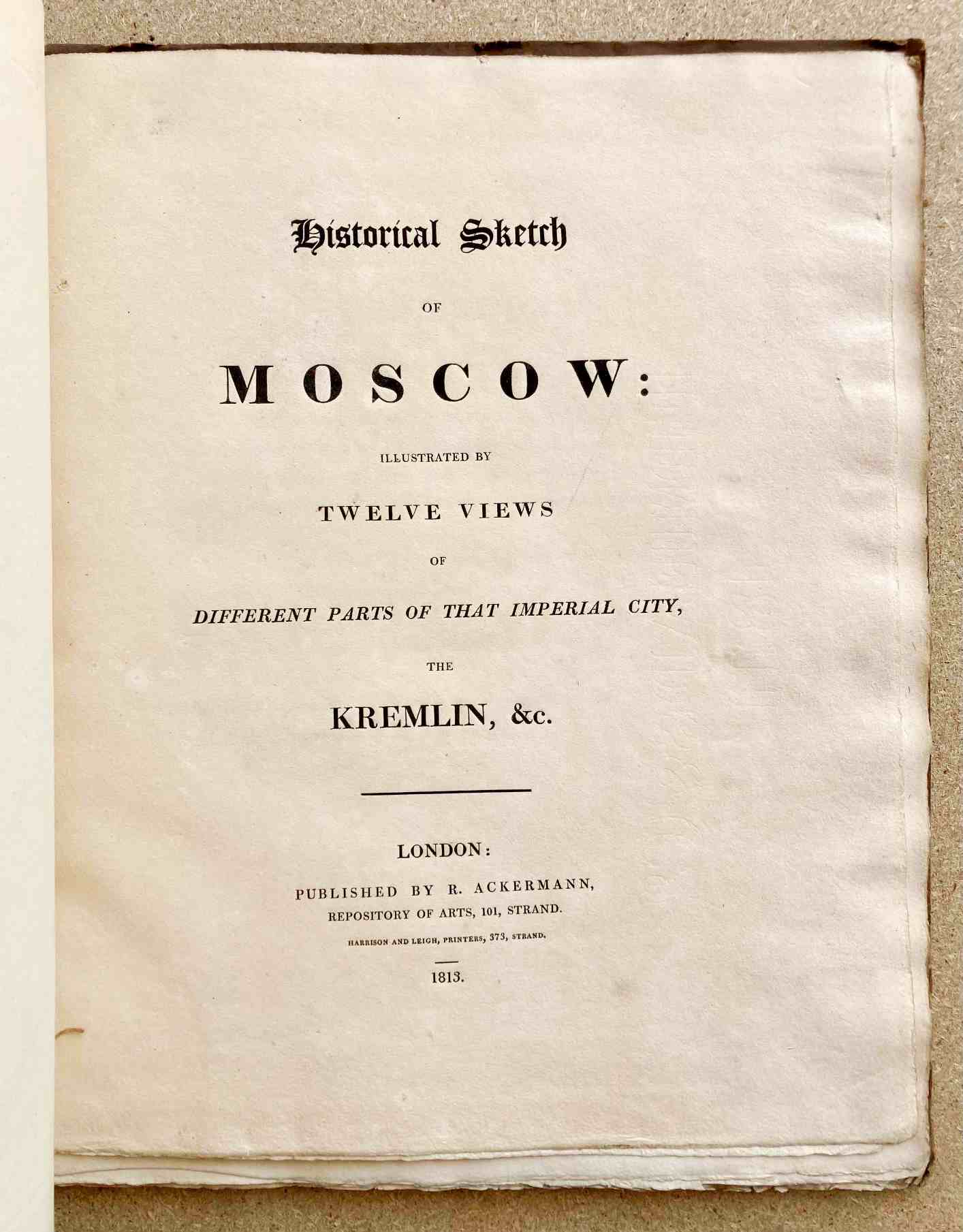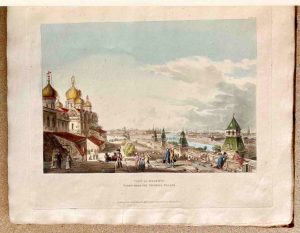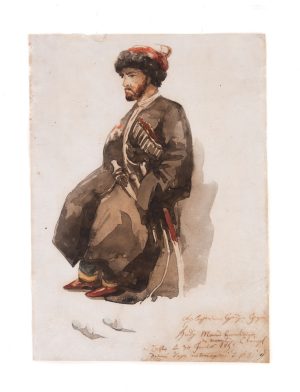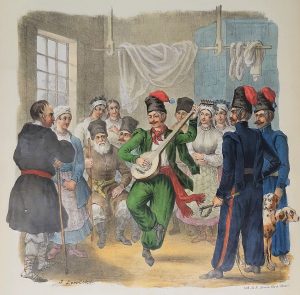Our Notes & References
One of the few English hand-coloured plate books on Moscow: an attractive example, uncut in publisher’s boards, like the Abbey copy.
English society in the early nineteenth century developed a strong interest in its Northern ally in the fight against Napoleon. Just a few month after Bonaparte retreated from Moscow, the successful London publisher Rudolf Ackerman (1764-1834) issued this album with the city views and genre scenes. Originally a saddler and coach builder, Ackerman discovered his talent in drawing and in 1795, opened his own print shop and a drawing school. Specialising in printed illustrations, he also significantly advanced his lithographic press and began manufacturing colours and paper that lead his print and book publishing business to significant success and expansion throughout the 1800-10s.
Fostering the viewers’ interest in Russia, Ackerman writes in the present album: “The devastation of the ancient capital of the Russian empire, so recently caused by the entrance of Bonaparte into that extensive city, produces a general desire to become acquainted with the circumstances of its origin, to trace its improvements, and to learn something of the habits and manners of its inhabitants.” Interestingly, Ackerman presents not only the main Russian landmarks, such as the Kremlin, the “View from the Imperial Palace” and “the Great Square”, full of merchants from different countries, but also rarer sights, including the pastoral views with dramatic clouds casting shadows on the entrance gates to Moscow from “Volodemer”, the Petrovskii Palace and the “Old Wooden Theatre”. Most plates include scenes of everyday life in Moscow, especially the “View of the Ice Hills, during the Carnival”, surprisingly precise in details when depicting people in different attires, the city attractions and architecture before the city turned into “venerable ruins now smoking” (Ackerman).
The author also adds almost 30 pages of recollections from different English sources about Russia and its people, focusing on history of Moscow and including curious statistical details about the city houses and populations in the late 18th century, noting in the introduction that “he has endeavoured to bring together the most interesting circumstances which he could collect, relating to Moscow”.
These large and fresh, masterfully hand-coloured plates with broad margins are preserved here in the publisher’s original grey boards with the paper label illustrated in Abbey’s catalogue. This copy is complete and presents all plates bound at the very beginning.
Provenance
Rupert Alexander Alec-Smith (1913-83; English politician, Lord Lieutenant of Humberside and keen collector of historic English documents and other memorabilia from the 14th century onward; ex-libris to upper flyleaf); [?B.B. Maurth Booth] (inscription in pencil on upper board and upper flyleaf).
Bibliography
Abbey Travel 224; not in the Cat. Russica.
Physical Description
Quarto (36.2 x 29.8 cm). 12 hand-coloured aquatint plates, all numbered and captioned, title, [1] p. introduction, 27 pp. Watermarks like the Abbey copy.
Binding
Original grey boards, front cover with original printed paper label, pages uncut.
Condition
Boards slightly rubbed and stained; occasional minor staining, a couple marginal notes in purple pencil.


